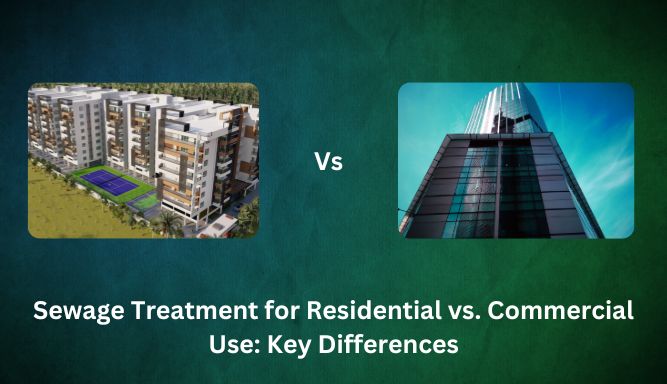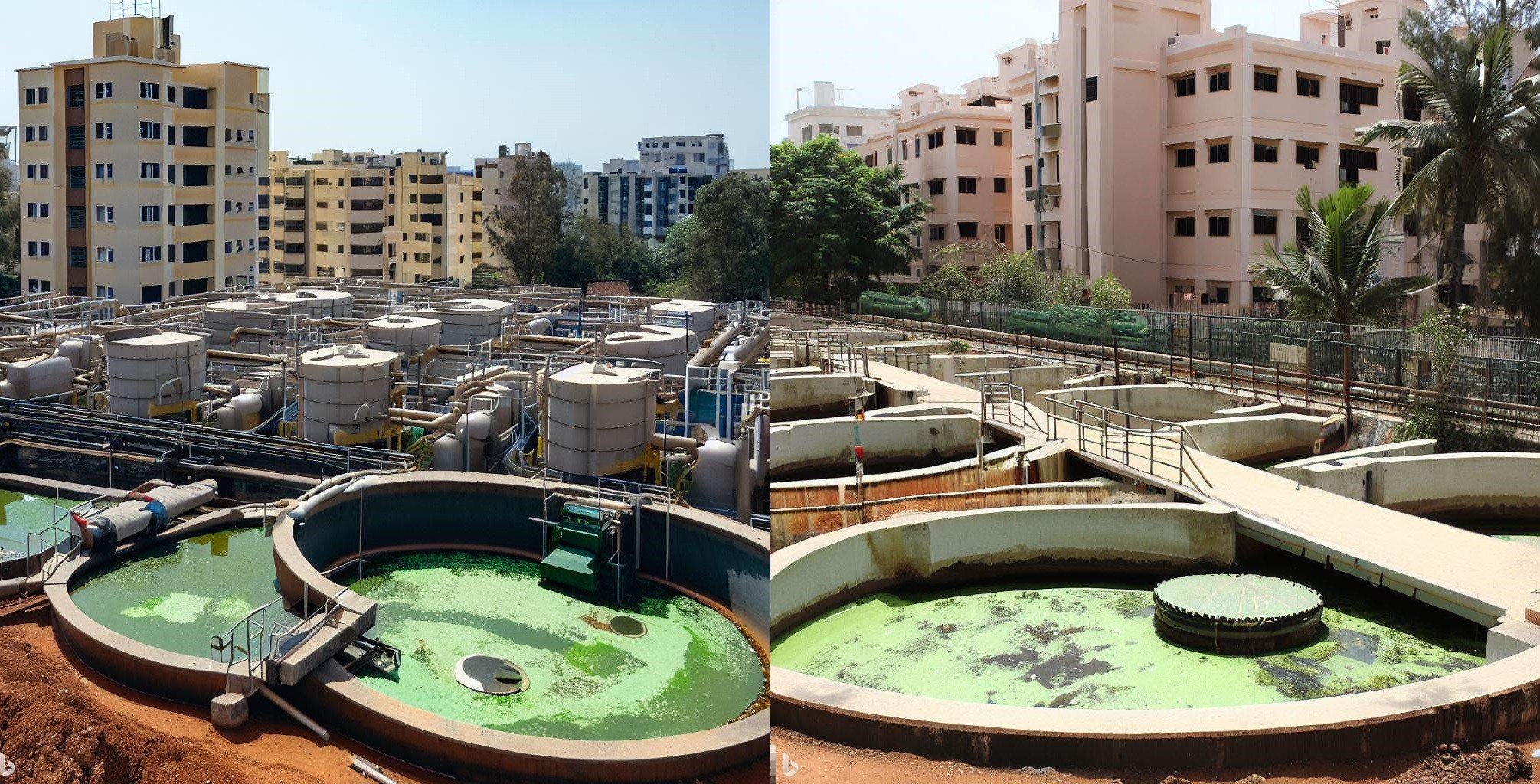
SUBSCRIBE to our monthly NEWSLETTER

As a builder in Karnataka, Telangana or Maharashtra, you know that meeting regulatory requirements is crucial for the success of your projects. One of the key areas you must focus on is sewage treatment. Proper sewage treatment is not only a legal requirement but also a critical aspect of safeguarding public health and protecting the environment.
Central Pollution Control Board (CPCB) working under the Ministry of Environment and Forest (MoEF) is the Policy making body. State Pollution Control Board is the implementing authority and they have the power to modify the norms within their State to suit local requirements.
The Pollution Control Board (PCB) in each state has set stringent norms for sewage treatment to ensure that untreated wastewater doesn’t harm the environment. Unfortunately, many small builders struggle to navigate these regulations due to a lack of knowledge and the perceived complexity of sewage treatment processes. In this blog, we will help you understand the norms and guide you on how to comply effectively.
Pollution Control Boards in each state, including the Karnataka State Pollution Control Board (KSPCB), Maharashtra Pollution Control Board (MPCB), and Telangana State Pollution Control Board (TSPCB), are responsible for regulating the discharge of wastewater to prevent environmental contamination.
Builders are required to install Sewage Treatment Plants (STPs) to treat wastewater generated from residential and commercial projects before releasing it into the environment.
The main requirements typically include:
Consent to Establish (CTE): This permit must be obtained before the construction of an STP.
Consent to Operate (CTO): This permit allows you to start operating the STP after installation.
Effluent Quality Standards: Treated sewage must meet specific parameters (such as Biological Oxygen Demand (BOD) and Chemical Oxygen Demand (COD)) before it can be discharged or reused.
Capacity Requirements: The required STP capacity depends on the size and type of your project. For instance, residential projects generating more than 10 KLD (kiloliters per day) of wastewater must have an STP on the project site.
Water Reuse: Treated wastewater must be reused for non-potable purposes, such as gardening, flushing, or car washing, to promote sustainability and reduce strain on freshwater resources. Water reuse norms are very strict in Karnataka.
Regular Monitoring: Builders are also required to regularly monitor and report the quality of treated effluent to ensure compliance.
In large projects, MoEF has made it mandatory for builders / developers to operate STP for at least 5 years.
Get Familiar with Local PCB Guidelines
The first step in ensuring compliance is to get familiar with the specific guidelines of the Pollution Control Board in your state. Each state may have slightly different norms, but the primary goal remains the same: to prevent untreated wastewater from contaminating the environment.
For builders in Karnataka, Telangana, and Maharashtra, it is important to:
Contact the regional PCB office to obtain a copy of the guidelines.
Consult with environmental experts or STP suppliers to understand the specific requirements for your project.
Visit the official PCB websites for updates on rules and regulations:
Karnataka: [KSPCB Official Website]
https://kspcb.gov.in
Telangana: [TSPCB Official Website]
https://tspcb.cgg.gov.in
Maharashtra: [MPCB Official Website]
https://mpcb.gov.in
Select an Appropriate Sewage Treatment Technology
The next crucial step is to select the right sewage treatment technology that meets the compliance requirements while keeping costs manageable. Here are some common technologies available:
Membrane BioReactor (MBR)
MBBR (Moving Bed Biofilm Reactor)
SBR (Sequencing Batch Reactor)
Activated Sludge Process (ASP)
Advanced Hybrid Technology (like Johkasou)
Learn more about various Sewage Treatment Technologies here
It is important to select a technology that aligns with your project’s capacity, budget and maintenance requirements. Consulting with STP suppliers or environmental engineers can help in identifying the best solution for your project
Obtain Necessary Permits
After selecting the technology, you need to apply for the necessary permits from the PCB:
Consent to Establish (CTE): Submit an application with details about the project, the selected STP technology, and an Environmental Impact Assessment (EIA) report if required.
Consent to Operate (CTO): Once the STP is installed, you must apply for the CTO. The PCB will inspect the STP and verify that it meets all standards before granting the permit.
The permit process typically involves:
Documentation: Site layout plans, project details, Water Sources, Wastewater Treatment Equipment and Water balance and excess water disposal plans
Fees: Permit fees vary based on the project size and the state. This starts at 0.05% of the project cost.
Ensure Proper Installation and Maintenance
Proper installation and maintenance of the STP are crucial for ensuring compliance. Hiring a reputable supplier or contractor to install the STP is essential to ensure that the plant operates efficiently and meets PCB norms.
Installation: Ensure that the STP is installed according to the design specifications and guidelines provided by the PCB. This minimizes the chances of errors and ensures optimal performance.
Maintenance: Regular maintenance of the STP is essential to ensure compliance with PCB norms. Maintenance activities typically include cleaning of the bar screen, sludge removal, and ensuring that all mechanical components are functioning properly.

With over two decades in the water treatment business, I pioneered bulk pure water distribution and now lead the way in sustainable sewage treatment with easySTP, inspired by Japan’s Johkasou technology. My vision includes widespread adoption and expansion through a new factory and sewage academy.

With over two decades in the water treatment business, I pioneered bulk pure water distribution and now lead the way in sustainable sewage treatment with easySTP, inspired by Japan’s Johkasou technology. My vision includes widespread adoption and expansion through a new factory and sewage academy.
SUBSCRIBE to our monthly NEWSLETTER
WhatsApp us